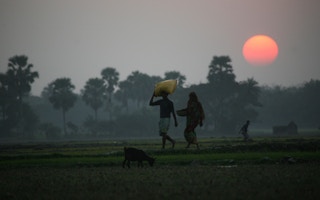India’s electricity access challenge is formidable. About 300 million people lack electricity, while an additional 100 million have less than 4 hours of electricity per day, and possibly several million more suffer from unreliable supply. Population growth and an increase in electricity demand each year could further strain the grid.
Despite the scale of the challenge, the Government of India has committed to supplying electricity to all villages by May 2018, and to provide 24-7 power to all households by 2019. Unlike previous targets, this time around, there seems to be more excitement and belief that the targets might indeed be achievable.
The most recent sign for optimism is India’s draft National Policy on Renewable Energy-based Micro-grids, which will establish at least 10,000 renewable-based micro- and mini-grid projects across the country. For the first time, the Indian government will complement grid access with decentralized, smaller-scale systems that supply electricity directly to consumers.
Still, implementation will be tough, and there are issues left to resolve. Here are five that need further discussion:
1. Who will get micro- and mini-grid services, and who will receive electricity from the main grid?
The draft Policy suggests the national government will publish information clarifying where grid expansion will not take place
. If done right, this information will bring some transparency. But more information is needed. For instance, what about the millions of un-electrified homes and small businesses in and around electrified villages? Should micro-grid providers work to connect these potential customers, or wait for the main grid to improve?
A set of objective criteria would guide micro-grid providers toward smart decisions. WRI’s energy access market maps highlight demand for energy services, households’ capacity to pay, customers’ proximity to the main grid, reliability of grid supply and other important details that can help guide such decisions.
2. How will regulatory issues be addressed?
India’s electricity regulators have oversight of tariffs, quality of supply and interconnection. While regulators have experience making rules for the main grid, the growth of micro-grids poses new challenges.
The draft Policy identifies some of these issues, but does not provide the longer-term perspective that could determine what happens when the main grid reaches areas serviced by micro-grids, how these would interface, how (and if) the micro-grid infrastructure will be used, and how regulators will ensure that consumers continue to access the most reliable and affordable services. Until some of these issues are sorted out, investors will continue to see micro-grids as risky.
3. How to deal with different forms of power?
Like most countries, India’s main grid is based on alternating current, or AC power. But the country is also seeing an increasing interest in direct current, or DC power appliances and DC-based micro-grids, especially for small-scale solar systems. Will adopting DC-based micro-grids preclude these rural households from ever being connected to the main grid?
Will this put them at a disadvantage over the long term? How are regulators and policy makers approaching this? Government officials and research organizations will need to study the efficacy of these DC micro-grids and appliances in light of medium- to long-term expansion of the main, AC grid.
4. How can energy efficiency play a role?
The relationship between energy efficiency and electricity access has been under-explored in India. On the one hand, we don’t want expanded access to end up promoting wasteful consumption or excess consumption, as we’ve seen in many developed nations today.
On the other, there are energy-efficient technologies that could go hand-in-hand with energy access programs, as we have seen in the lighting sector, where energy-efficient LEDs have played a lead role in providing lighting at lower costs for rural India.
The government and research organizations should investigate how rural appliances can be made more energy-efficient, and how these can be made more easily available in rural India. These appliances could also be brought within the Bureau of Energy Efficiency’s appliance standards and labelling program in order to ensure they adhere to performance standards and help foster more widespread adoption.
5. Will electricity connection improve the overall wellbeing of people and communities?
We need to take this conversation beyond the mere electricity “connection,” and begin to draw closer linkages between energy access and the socio-economic development of people and communities. Too often, we’ve seen villages, despite being “electrified“ remain behind in other areas. “Electricity for all” must be seen as a means to better healthcare, education, livelihood opportunities and quality of life.
Ministries and departments can establish goals that link electricity provision with health, education, jobs, rural development and poverty-reduction targets. More research and analysis is needed on how to design rural electrification programs to have stronger poverty reduction and developmental impacts.
Can India become an energy access leader?
Done right, India can show the rest of the developing world how achieving universal access to affordable energy can help achieve other Sustainable Development Goals, too. Given the great need and ambition, the country can’t afford to get it wrong.
Bharath Jairaj is a Senior Associate at WRI and is part of the Electricity Governance Initiative (EGI). This post is republished from WRI’s Insights blog.











